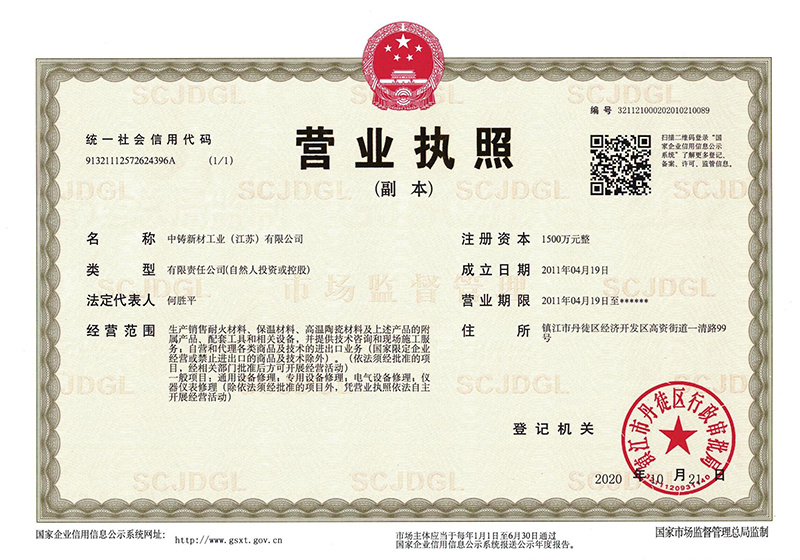News
SINO-FOUNDRY—professional refractory manufacturer
Top Applications of Alumina Silicate Based Mastics in Non-Metallic Minerals
2025-05-26
Top Applications of Alumina Silicate Based Mastics in Non-Metallic Minerals Introduction to Alumina Silicate Based Mastics Alumina silicate based mastics are engineered materials primarily composed of alumina, silica, and various additives. These mastics are recognized for their remarkable thermal stability, excellent adhesion properties, and resistance to harsh environments. Their unique charac
Top Applications of Alumina Silicate Based Mastics in Non-Metallic Minerals
Introduction to Alumina Silicate Based Mastics
Alumina silicate based mastics are engineered materials primarily composed of alumina, silica, and various additives. These mastics are recognized for their remarkable thermal stability, excellent adhesion properties, and resistance to harsh environments. Their unique characteristics make them indispensable in the non-metallic minerals industry, where they enhance the performance of various products.
Understanding Non-Metallic Minerals
Non-metallic minerals encompass a wide range of materials, including clays, talc, gypsum, and various industrial minerals. These materials are crucial for various applications, including construction, ceramics, and energy production. The demand for high-performance materials in these sectors has led to the increased use of alumina silicate based mastics.
The Importance of Alumina Silicate in Non-Metallic Minerals
Alumina silicate is a vital component in several non-metallic mineral applications due to its desirable properties. It serves as a binding agent, reinforcing agent, and thermally resistant material, enabling manufacturers to produce high-quality products that can withstand extreme conditions.
Key Applications of Alumina Silicate Based Mastics
Alumina silicate based mastics have a diverse range of applications in the non-metallic minerals industry. Here are some of the most significant:
1. Construction Materials
In the construction sector, alumina silicate based mastics are used in adhesives, sealants, and mortars. Their exceptional adhesion properties ensure the durability and longevity of structures, making them an ideal choice for both residential and commercial projects.
1.1. Tile Adhesives
Tile adhesives formulated with alumina silicate mastics provide strong bonding capabilities, ensuring tiles remain securely in place. These adhesives offer resistance to moisture, temperature fluctuations, and mechanical stress, making them suitable for both indoor and outdoor applications.
1.2. Grouts and Sealants
Grouts containing alumina silicate materials enhance waterproofing and reduce the risk of mold growth in bathrooms and kitchens. The mastics' ability to withstand thermal shock is particularly beneficial in environments with significant temperature variations.
2. Ceramics and Glass Manufacturing
Alumina silicate based mastics play a crucial role in the ceramics and glass manufacturing processes. They are used as binders in ceramic formulations, helping to improve the mechanical strength and thermal stability of finished products.
2.1. Porcelain and Stoneware
In the production of porcelain and stoneware, alumina silicate mastics contribute to enhanced toughness and resistance to thermal shock. This results in products that are not only functional but also aesthetically appealing.
2.2. Glass Fiber Reinforcement
Mastics containing alumina silicate are also utilized in the reinforcement of glass fibers, improving their overall performance. This application is particularly important in industries requiring lightweight yet strong materials, such as automotive and aerospace.
3. Refractory Applications
Alumina silicate based mastics are essential in the production of refractory materials, which are designed to withstand high temperatures without melting or deforming. These materials are critical in industries such as metallurgy, cement, and power generation.
3.1. Industrial Kilns and Furnaces
Mastics used in kilns and furnaces provide excellent insulation and protection against thermal stress. They contribute to the longevity and efficiency of these high-temperature environments, reducing energy consumption and maintenance costs.
3.2. Firebricks and Castables
In the manufacturing of firebricks and castable refractories, alumina silicate mastics enhance the structural integrity and thermal resistance of the final products. This is crucial for ensuring safe and efficient operations in various industrial applications.
Advantages of Using Alumina Silicate Based Mastics
The adoption of alumina silicate based mastics offers numerous advantages across various applications, including:
1. Enhanced Durability
Mastics formulated with alumina silicate perform exceptionally well under demanding conditions. Their resistance to wear, moisture, and extreme temperatures ensures a longer lifespan for products and structures.
2. Improved Thermal Stability
These mastics maintain their properties even under high-temperature conditions, making them ideal for applications in industries such as metallurgy and ceramics. This stability reduces the risk of failure and enhances overall efficiency.
3. Versatile Applications
The adaptability of alumina silicate based mastics allows for use in a wide range of industries, from construction to ceramics and refractories. This versatility makes them a valuable asset for manufacturers seeking to enhance product performance.
4. Eco-Friendly Characteristics
Many alumina silicate mastics are formulated to be environmentally friendly, contributing to sustainable manufacturing practices. Their use can help reduce waste and promote greener alternatives in the industry.
Future Trends in Alumina Silicate Mastics
As the demand for non-metallic minerals continues to grow, the development of alumina silicate based mastics is expected to evolve. Innovations may include enhanced formulations that improve performance characteristics, reduce environmental impact, and expand their range of applications.
1. Sustainable Alternatives
Research is actively being conducted to develop sustainable alternatives to traditional mastics. This includes the use of recycled materials and bio-based additives that minimize environmental impact while maintaining performance.
2. Advanced Manufacturing Techniques
The adoption of advanced manufacturing techniques, such as 3D printing, is likely to influence the production of alumina silicate based mastics. This could allow for more precise formulations and tailored properties to meet specific application needs.
Frequently Asked Questions (FAQs)
1. What are alumina silicate based mastics?
Alumina silicate based mastics are engineered materials composed of alumina and silica that serve as binders and adhesives in various applications, particularly in the non-metallic minerals industry.
2. What industries use alumina silicate mastics?
These mastics are widely used in industries such as construction, ceramics, glass manufacturing, and refractories due to their superior thermal and mechanical properties.
3. How do alumina silicate mastics improve adhesion?
The unique chemical composition and physical properties of alumina silicate mastics enhance their ability to bond with various substrates, resulting in stronger and more durable connections in applications.
4. Are alumina silicate based mastics environmentally friendly?
Many formulations are designed to be eco-friendly, utilizing sustainable materials and reducing harmful emissions during production and application.
5. What is the role of alumina silicate in refractory materials?
In refractory materials, alumina silicate provides thermal stability and resistance to high temperatures, making it essential for applications in kilns, furnaces, and other high-heat environments.
Conclusion
The applications of alumina silicate based mastics in the non-metallic minerals sector are vast and varied. Their unique properties, including superior thermal stability, enhanced adhesion, and durability, make them indispensable in various industries. As technology advances and the demand for high-performance materials grows, alumina silicate mastics will continue to play a crucial role in shaping the future of non-metallic minerals. Embracing these innovative materials not only enhances product performance but also promotes sustainable practices in manufacturing, making them an essential component for the industry's future success.
Related News
2024-11-05
Zhongzhu New Materials Industry sincerely invites you to participate in the 24th International Forum and Exhibition on Recycled Metals.

WeChat public account

View mobile website
Address : No. 99, Yiqing Road, Gaozi Street, EconomicDevelopment Zone, Dantu District, Zhenjiang City
Fax : +86-511-85683066
E-mail : sales@sfr168.com
Website : https://www.sfr168.com
Copyright©2023 Sino-Foundry Refractory(Jiangsu) Co.,Ltd. Powered by:www.300.cn
Copyright©2023 Sino-Foundry Refractory(Jiangsu) Co.,Ltd.
IPV6 | SEO | Cloud Information



